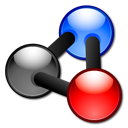Posts Tagged electromagnetic waves
HEINRICH RUDOLPH HERTZ (1857- 94)
Posted by historyofscience101 in ELECTRICITY, ELECTROMAGNETISM, NINETEENTH CENTURY, PHYSICS, TIMELINES on July 8, 2013
1888 – Germany
Radio waves can be produced by electric sparks. They have the same speed as light and behave as light
Hertz’s discovery provided the basis of radio broadcasting.
In 1864 MAXWELL‘s equations predicted the existence of electromagnetic waves.
His thinking had shown that electromagnetic waves could be refracted, reflected and polarized in the same way as light. Hertz was able to measure the speed of these waves and to show that the speed is the same as that of light.
Hertz hypothesised that he could experimentally examine the waves by creating apparatus to detect electromagnetic radiation. He devised an electric circuit with a gap that would cause a spark to leap across when the circuit was closed. If Maxwell’s theory was correct and electromagnetic waves were spreading from these oscillator sparks, appropriately sensitive equipment should pick up the waves generated by the spark.
Hence he constructed the equivalent of an antenna.
His simple receiver consisted of two small balls at the ends of a loop of wire, separated by a small gap. This receiver was placed several yards from the oscillator and the electromagnetic waves would induce a current in the loop that would send sparks across the small gap. This was the first transmission and reception of electromagnetic waves. He called the waves detected by the antenna ‘Hertzian waves’.
We are now familiar with all the types of electromagnetic waves that make up the complete electromagnetic spectrum. They all travel with the speed of light and differ from each other in their frequency. We measure this frequency in hertz.
It was left to the Italian electrical engineer GUGLIELMO MARCONI to refine this equipment into a device that had the potential of transmitting a message and to develop technology for the practical use of Hertzian waves – when they became commonly known as radio waves.
Further experimentation showed that these waves had the properties that Maxwell had predicted.
As well as being important as a newly discovered phenomenon, Hertz’s discovery helped to prove that Maxwell had been correct when he suggested that light and heat were forms of electromagnetic radiation.
Radio waves are electromagnetic waves. Other main kinds of electromagnetic waves are: gamma rays; X-rays; ultra-violet radiation; visible light; infrared radiation and microwaves.
This radiation was behaving in all the ways that would be expected for waves, the nature of the vibration and the susceptibility to reflection and refraction were the same as those of light and heat waves. Hertz found that they could be focused by concave reflectors.
Experimenting further, Hertz spotted that electrical conductors reflect this electromagnetic radiation and that non-conductors allow most of the waves to pass through.
In honour of Hertz’s achievements, the SI unit of frequency, the hertz (Hz), was named after him.
Hertz’s discoveries came at an early age. The German physicist died at the age of thirty-six.


 TIMELINE
TIMELINE